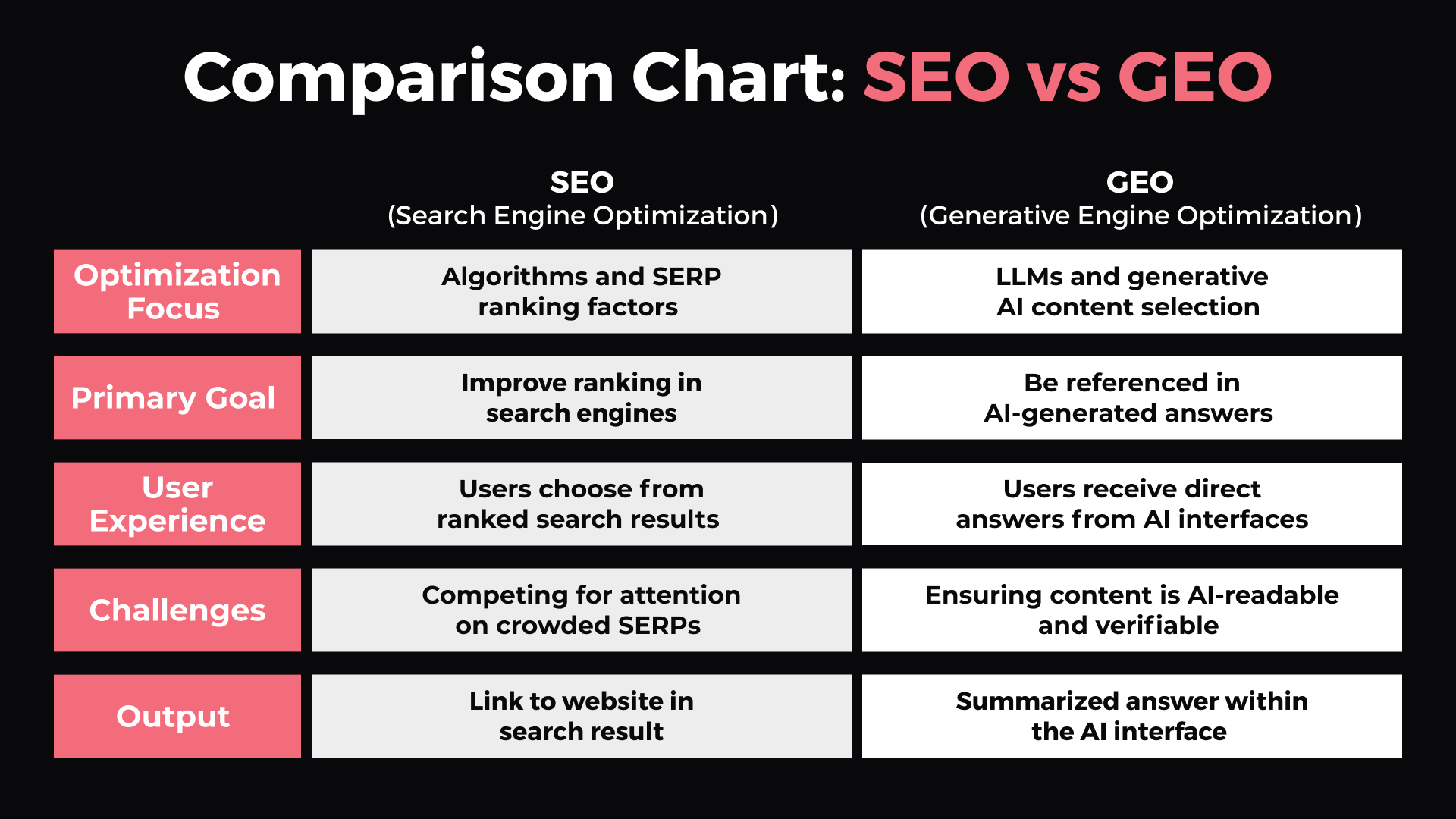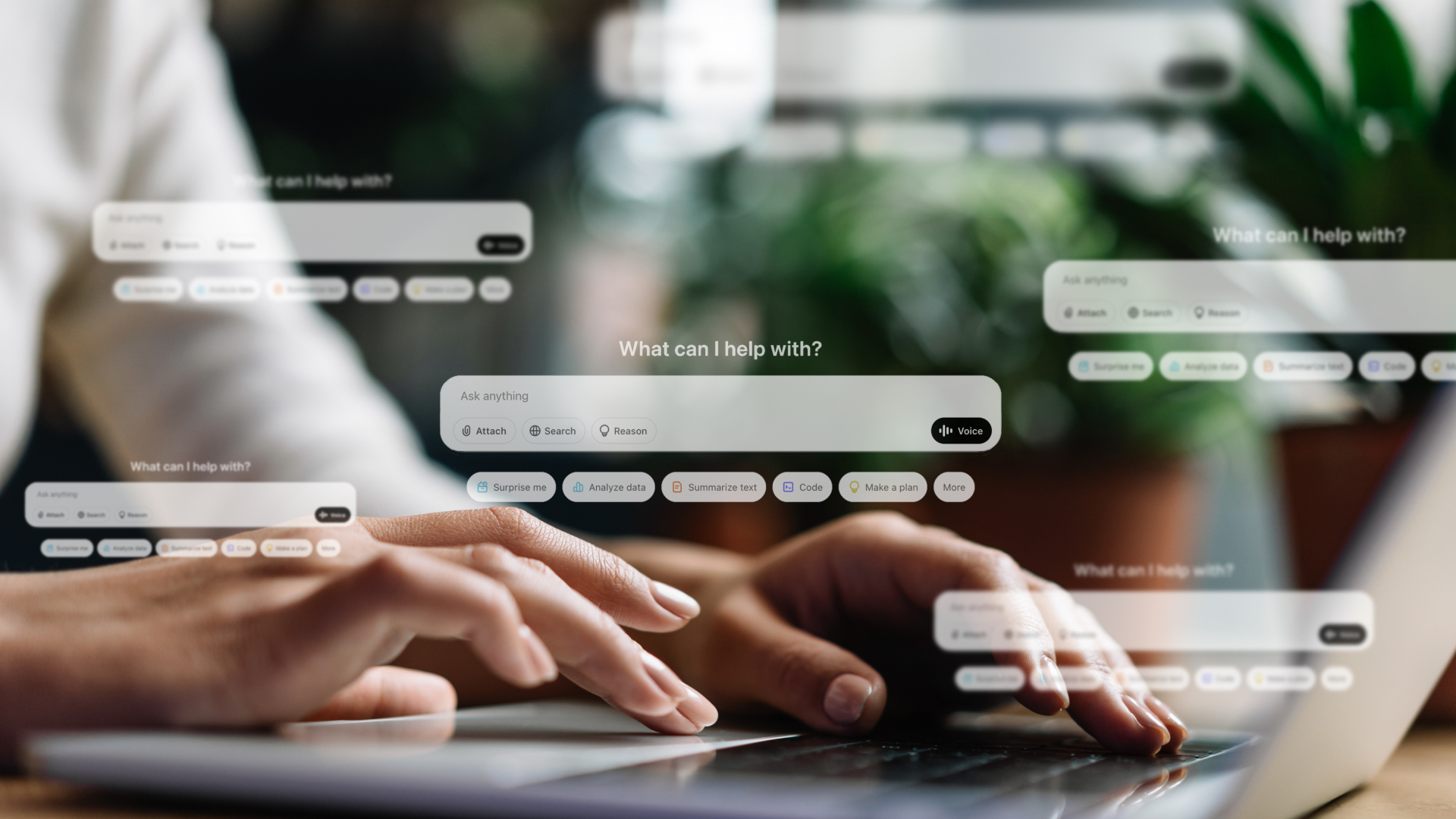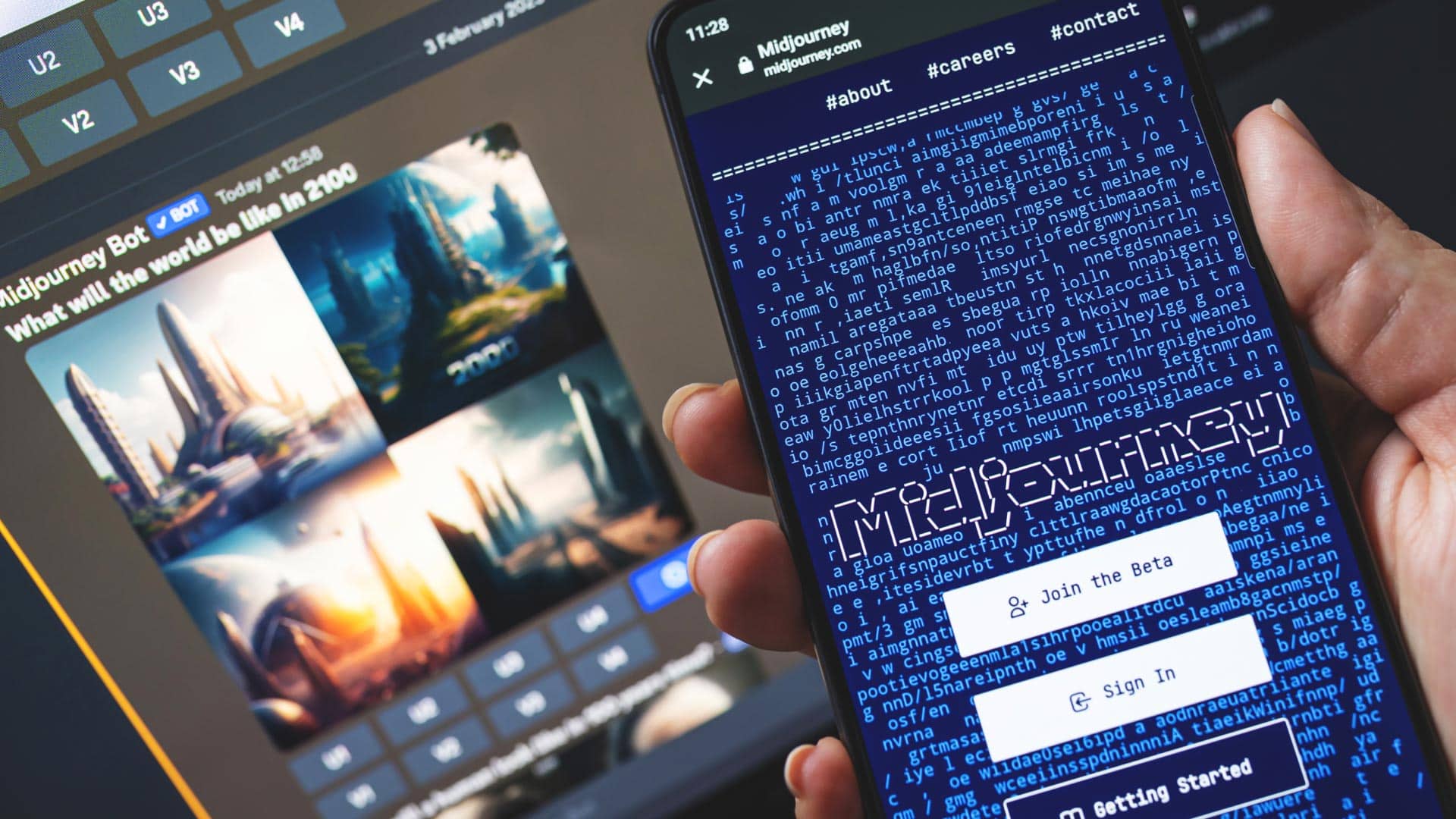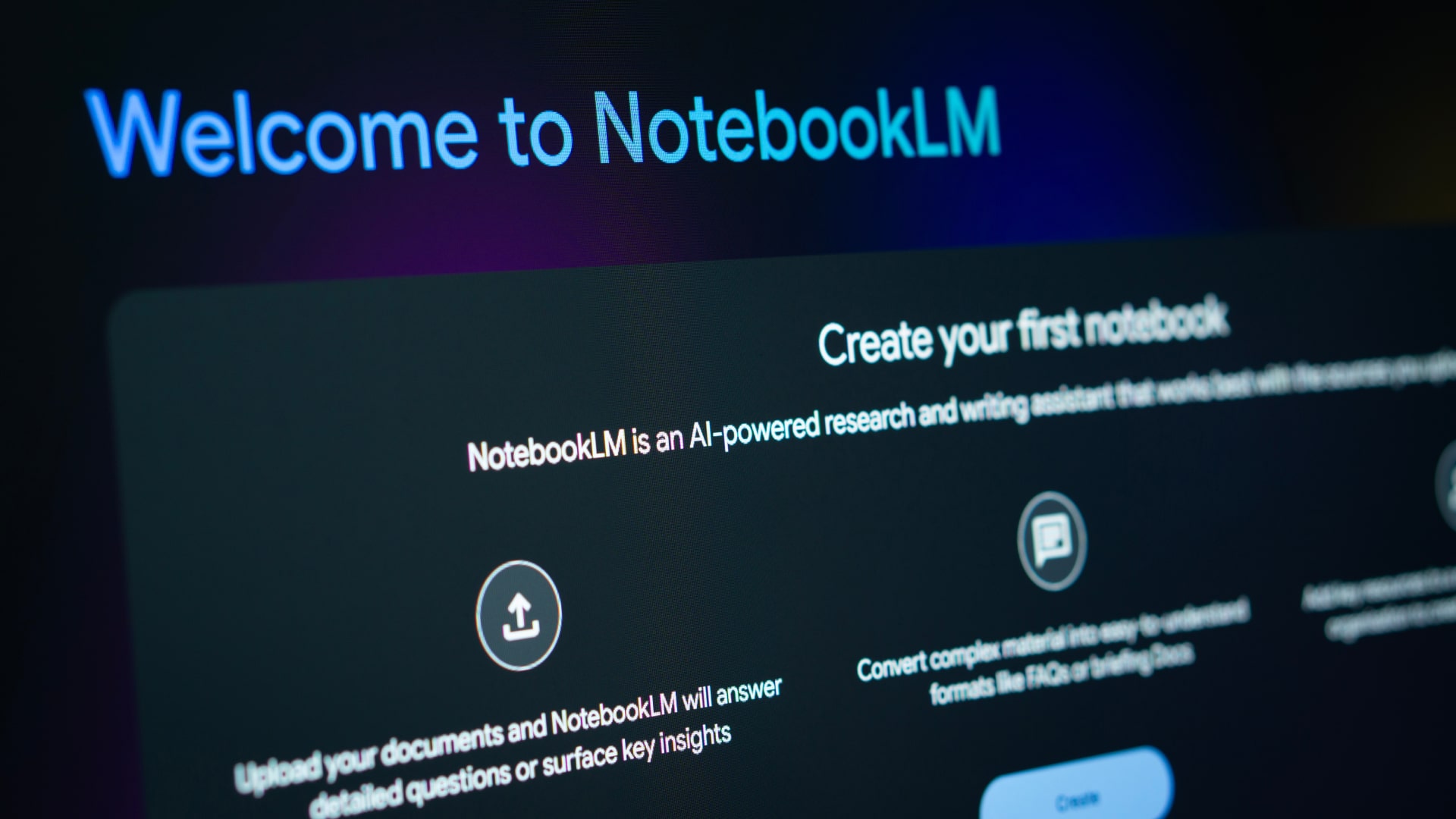In addition to navigating these troubled waters, platforms are becoming more data-shackled, as governments are raising their brows when it comes to how and what user information is being aggregated. As a result, platforms are updating rules and regulations across the board.
Strategists are now forced to consider new approaches while continuing to develop salient plans without the luxury of obtaining the same type of data to help inform those strategies. If that’s not enough, channel demographics are shifting like never before. Content consumption has increased exponentially, and the ways people use platforms have shifted.
While volatility is at an all-time-high, there have been positive developments like the removal of Facebook’s 20% text rule (yes, creatives can now rejoice), emergent platforms are coming out of the woodwork, and the undeniable and overwhelming desire for social media is universal.
Considering the climate, we highlighted the top trends that we’re bound to see and also leverage as we head into 2021 and beyond:
- Video and live streaming
Many brands are seeing that video continues to reign supreme in terms of engagement. With short attention spans, especially among younger demographics, it is no surprise that video outperforms most content-types. According to Cisco, 82% of all online content will be video content. In addition, live video will also continue to grow across brand pages into 2022.
In 2019 alone, internet users watched 1.1 billion hours of live video. And while this figure was already sure to explode, the global crisis has only added more fuel to the fire, with live video becoming the prime method to communicate for many industries.
- Ephemeral content
Short-term formats like “stories” aren’t going anywhere. In fact, these formats are not only available on Instagram, Facebook and WhatsApp, similar features have been sprouting up on other platforms like YouTube, LinkedIn and Twitter, with others in the pipeline. According to Hootsuite, 64% of marketers either have already incorporated Instagram Stories into their strategies or plan to.
It’s evident that users enjoy the idea of not feeling tied to content in perpetuity, particularly in-feed content, and posts that have a shorter shelf-life are more compelling since they’re fleeting. The beauty of it all is if content is worth keeping, it can be saved or pinned, where available.
- Virtual Events
Although this method became a necessity in 2020, virtual events will continue to be more accessible and frequent to communicators and users alike. For example, LinkedIn now enables free lead capture for events on the platform. You can either host an event on LinkedIn Live or point individuals to another virtual event platform. In addition, virtual events will provide fertile ground for more opportunities in advertising and beyond.
- Influencer Marketing
Influencers aren’t going anywhere. If anything, they have evolved with the times. Brands realize that it’s more cost-effective to utilize micro and nano influencers and still receive high return on investment. Although most influencers are found and used on social, brands are now leveraging content generated by influencers on websites, online stores, newsletters and other channels.
- Social Commerce
With almost half the world’s population now using social media, it’s expected that the next step would focus on online shopping. According to Envato, 71% of consumers turn to social media for shopping inspiration, with 55% of online shoppers now making the majority of their purchases through social media channels.
With research showing that customers are more likely to buy when presented with a streamlined shopping experience, social media platforms will continue to develop more e-commerce tools to promote social selling.
- Branded Content
While user-generated content is still considered a valuable tactic, high-quality branded content is predicted to soar in 2021. Although most branded content would typically be created for promotions, it’s now more significant to create a unique experience for consumers.
With the quality and quantity of marketing content on the rise, strategists are exploring how to gamify online experiences to keep users engaged.
- Personalized Marketing
Customers will continue to demand more from brands, favoring companies that offer better experiences at multiple touchpoints. For example, online and SMS messaging between customers and brands will grow.
Businesses and marketers are leveraging this trend in the delivery of social media ads as platforms now offer advanced targeting and customization options. This method has reached such new heights that, now, platforms are able to understand the type of products a person likes. With that data, they can serve ads for similar products from various brands.
- Authenticity and Accountability
Authenticity and accountability are two buzzwords marketers have been leaning on heavily in 2020.Now, consumers expect more from brands. They want openness, inclusivity and honesty. They want their brands to take a stand, and they invest in companies that mirror their values. Eighty-six percent of consumers say authenticity is important when deciding the brands they like and support.
All in all, it’s more noteworthy to tell consumers an honest story instead of advertising to them, which creates more trust and appreciation for their company.
Moral of the Story
It’s clear that social media will continue to be unpredictable. More individuals realize the impact social media brings to the table, and platforms are responding to that in a big way.
Platforms will continue to update and attempt to squash the competition. Platforms must be nimble to keep up with users, so marketers will always need to be ahead of the game and be ready to roll.
The Latest
We study the game as hard as we play it.
Learn with us what’s now and next.
Related Stories
What’s your relationship with AI? If you were to ask me that question, I would say AI is like my “boyfriend.” We’re at a stage where I still get the butterflies when “he’s” around. We haven’t decided where exactly we’re going, but we’re excited about doing it together. We’re in this for the long haul. Will we ever get “married?” It’s tough to know what that word would mean for us in the future. But we’re certainly going to move in together.
The question for marketers today is not whether you’re using artificial intelligence tools to speed up workflow and find fresh inspiration. A better question is whether the AI is improving your work and positioning the marketing team as an invaluable resource to the business. Is AI taking our jobs away? Not yet — but some businesses, including IBM are already making snap judgments that it will, and they’re making marketing staffing decisions accordingly. For marketers, there’s an opportunity to add human experience and skill to advanced tech, and to show why the human element is irreplaceable.
Innovation requires a broad range of skills and experience
AI is accelerating a transformation of roles within businesses and marketing teams, and Mod Op is on board with this change. We’re using AI to give marketers the freedom to grow their skillsets and find new solutions and strategies. I believe strongly in learning diverse skills, getting outside of what you might think of as your lane, and following your inspiration. But they need the opportunity – the time and the tools – to explore new things. I began my own career not in marketing but in IT, as a developer. I left an internal IT role to work for a brand agency, and I learned amazing new skills: What does it mean to really interpret the data and come at it from a human-centric approach? What do the patterns in the data mean from that angle – a very different angle than software engineers usually think about?
At the same time, marketers usually don’t have a connection of the data scientist or engineer’s role.. But they need it now. I would challenge any marketer today to take the initiative and begin learning relevant technical skills. Take basic statistical data science classes, or Python classes. The goal is not to become an engineer, but to demystify what AI is and how it works. Emboldened by new knowledge, marketers can begin identifying new marketing use cases, recommending customizations to the AI tools, and seeing new opportunities for collaboration and continued professional growth.
Finding valuable new uses for AI isn’t the only reason why marketers should lean into broadening their skill sets right now. A more diverse skill set is a competitive advantage for each individual marketer in the workforce. As long as there’s even a question about whether AI can replace human professionals, businesses will take it upon themselves to answer that question, and to take action accordingly. AI in itself isn’t actually replacing people now, but we’re seeing businesses taking big (if risky) bets and letting go of marketing professionals. A broader skill set is always helpful for hireability and job security.
Data usage is a competitive differentiator for AI-driven businesses
Today, any responsible marketer is thinking about using AI tools to their competitive advantage. But the most innovative ones are thinking about the competitive advantages of collecting and processing data ethically. Right now, marketers have access to generally the same types of AI tools and apps. So to stand out, they add their deep understanding of the consumer into the mix. That understanding is essential to training the AI to process only the data necessary to enhance the customer experience. Mod Op is eager to explore AI apps as they come into the marketplace. But at the same time, we’ve set up a compliance and governance program to isolate where those apps are tested and who has access to them, and to make sure we understand the data. Due diligence is an essential process that must be continually ongoing.
If you want to use AI to add value to your and your team’s marketing work, you need to avoid the common trap of expecting AI to instantly provide magical solutions to complex problems. To continue to do standout work, you need to collaborate, to understand more of the tech teams’ thinking, and to take ownership of your business’s tech stack innovation. The marketer’s grasp and understanding of their audience has never been more important than it is now, with younger consumers increasingly expecting trust and transparency from brands. This is the time for teams to select their data sets and tools wisely. Marketers aren’t being replaced by AI. They’re positioned to guide the whole business to the most useful, ethical, and valuable usage of AI.
The Latest
We study the game as hard as we play it.
Learn with us what’s now and next.
Related Stories
In the last year alone, generative AI traffic has surged by an astonishing 1,200%. This isn’t just a trend, it’s a fundamental shift in how consumers discover information, products, and brands. At Mod Op, we’ve been pioneering the intersection of creativity and technology long before it became fashionable. Now, as Large Language Models (LLMs) reshape the digital landscape, we’re helping enterprise brands leap up the learning curve and secure an unfair advantage in this new frontier.
The Shifting Landscape
Traditional SEO focused on ranking websites in search results. Large Language Model Optimization (LLMO) or generative engine optimization (GEO) is about ensuring your brand appears as a trusted source in AI-generated responses. With Google’s AI Overviews reaching 1.5 billion monthly users, ChatGPT commanding 600 million, and Gemini growing to 350 million, the stakes couldn’t be higher.
Gartner predicts that by 2028, 50% of all search engine traffic will vanish as users migrate to conversational AI interfaces. Exhilarating? Yes. Intimidating? Also, yes. But like any technological revolution, the greatest opportunities belong to those who move first and move strategically. Also, yes. But like any technological revolution, the greatest opportunities belong to those who move first and move strategically.
Critical Pillars for LLM Visibility
Enterprise brands need a deliberate approach to LLM visibility that balances technical implementation with creative strategy. Our work with industry leaders has revealed four critical pillars:
Entity Optimization: LLMs understand the world through entities, people, places, products and concepts. Clearly defining your brand entities and their semantic relationships creates the foundation for AI visibility. This isn’t just about keywords; it’s about building a comprehensive digital identity that LLMs can confidently reference.
Knowledge Graph Integration: Securing your place in structured data repositories like Google’s Knowledge Graph dramatically increases your chances of appearing in AI responses. Our enterprise clients who’ve implemented comprehensive schema markup have seen up to 40% higher visibility in LLM-generated content.
Citation-Worthy Content: LLMs are designed to cite authoritative sources. By creating original research, proprietary statistics, and genuinely insightful content, you transform your brand from a search result into a reference point. This is where creativity and technology truly converge; factual authority delivered through compelling narratives.
Platform-Specific Optimization: Each major LLM, ChatGPT, Claude, Gemini, Llama and Grok, has unique characteristics that demand tailored approaches. The brands seeing the greatest success are those optimizing specifically for each platform’s distinct citation patterns and content preferences.
LLM Audit to Action
For enterprise brands ready to capitalize on this opportunity, the path forward requires both immediate action and strategic patience. Begin with a comprehensive LLM visibility audit to establish your baseline presence across platforms. Then implement technical foundations like schema markup and entity consistency before expanding to more advanced content and authority-building initiatives.
Measurement is critical, track not just mentions but the accuracy of your brand representation, the contexts in which you appear, and the traffic driven by AI referrals. This isn’t a set-it-and-forget-it strategy; it’s an ongoing process of refinement as LLMs evolve and user behaviors shift.
The Unfair Advantage
The most successful companies of the future won’t lean solely into tech and AI. And they won’t lean solely on creativity. The standard setters of the next chapter will be the most creative humans using tech and AI in the most creative ways.
At Mod Op, we’re helping enterprise brands navigate this convergence, turning the intimidating complexity of LLM optimization into a clear competitive advantage. The window for establishing a first-mover advantage is open now, but it won’t stay open forever.
The brands that master LLM visibility today will be the ones consumers discover tomorrow. Let’s push the edge of what’s next together.
The Latest
We study the game as hard as we play it.
Learn with us what’s now and next.
Related Stories
While it’s always appropriate to forecast top marketing trends to watch for at the beginning of the year, the changes and new developments of 2025 call for a mid-year catch-up. The rapid pace of technological innovation and the challenges of navigating economic conditions underline the importance of pausing and recalibrating while we have a chance. Seize the opportunity to get ahead of the game: Leaders from across Mod Op have weighed in on where they see marketing going through the latter half of 2025:
Brand identity and brand personality will be top of mind.
Branding today means reinforcing or asserting the brand’s identity, connecting on an emotional level, at all touchpoints. Philip Congello, Mod Op’s EVP, Client Success, sees marketers increasingly eager to lean into the “brand world, where all aspects of a brand’s visual and experiential elements are unified.” This is a trend Phillip has been watching all year. Today, he advises marketers to “turn marketing into a connective tissue — building immersive narratives, synchronized product and channel launches, and even translating packaging into interactive gateways via QR, AR, or loyalty tools.”
We also see B2B focusing more on brand. Hannah Woodham, Mod Op’s SVP, Paid Channel Marketing & Operations, sees a shift away from heavily bottom-of-funnel tactics for B2B marketers. “Maximizing brand impact earlier in the journey – and leveraging the influence of third parties within the buying network – is proving to enhance revenue enablement across the funnel,” she says.
AI is transforming how market research is done.
AI now empowers researchers to dramatically reduce the time necessary to analyze and recognize patterns in open-ended survey responses. And AI is becoming even more valuable in market research with the rise of synthetic data. “By using AI to generate realistic datasets, researchers can run studies without actual respondents,” says Lauren Schmidt, Mod Op’s Senior Director of Market Research and Strategy.
Matt Bretz, Mod Op’s EVP, Creative Innovation points to Dentsu’s recent acquisition of Evidenza, which enables Dentsu to take data around real human beings and create “digital twins” that respond to surveys the same way those humans would. “Assemble a large group of these digital twins, and you have a synthetic audience with which you can test indefinitely, almost instantly, inexpensively and securely,” he says.
AI will become more prominent in entertainment content development.
We’ve heard a great deal about generative AI’s ability to supercharge the development of ad creative and marketing materials. But right now, Fabio Fiss, Mod Op’s VP, Technology sees a big question emerging within the entertainment industry – how gen AI should interact with publishers’ and streaming platforms’ intellectual property. “I think [these businesses] will determine that if AI is to some degree ‘the enemy’ – best to keep your enemies close,” he says. Marketers will need to watch closely; in the event this causes IP holders to move toward taking AI-powered marketing in-house for the sake of security.
Where privacy and security are concerned, we can also expect AI to continue playing a role, and to make good on its promise to drive greater value from smaller data sets. “Targeted datasets are helping teams move faster, find more actionable insights, and save money compared to large-scale data approaches,” says Lauren, a longtime advocate for the power of small data.
Shorter tech development cycles and economic uncertainty will elevate the importance of marketers’ expertise and input.
Tech advancements have given marketers day-to-day efficiencies, but the pace of innovation has also demanded greater agility. “Tech cycles have compressed, placing greater pressure on marketing teams to remain competitive and innovative,” notes Holly. The task for marketers is not only to monitor the tech marketplace for new and useful solutions. Their task is also to continue evolving their own skill sets. By extension, the business’s task is to foster a culture of experimentation – “quick wins (and fast fails),” Holly explains. “Balancing these imperatives with compliance and risk management is a growing challenge.”
Marketers will demand ROI from their current and future tech investments.
Innovative tech promises value to marketers, but it also costs money. Fabio speaks of an “ROI reckoning” through 2025. Buyers will be focusing on measurable performance and bottom-line business impact. That focus will certainly impact the way businesses vet and choose tools, and the way they assess the tools they already have in their tech stacks. In other words, Fabio sees martech stack audits coming, with businesses looking closely at what’s truly aligned with their present-day goals. And again, this is where marketers can deliver value. “Whether it’s through stack simplification workshops, platform performance audits, or clear ROI frameworks, our role is not just recommending tools – it’s building business cases and helping clients operationalize change,” Fabio says.
As marketers continue moving forward, they’ll be balancing their ambitions against their risk management skills. Innovation is coming quickly, but the current business climate may call for gradual, iterative steps toward goals. Matt leaves us with this thought, “A project that a few years ago may have been more convenient to look at over the course of a year will be easier for all to embark upon today if it’s broken up into pieces with clear and less sweeping KPIs set for them.” The task for marketers is to invite closer collaboration with their business partners. Marketers have this opportunity to lead the way to a promising future.
The Latest
We study the game as hard as we play it.
Learn with us what’s now and next.
Related Stories
When marketers need answers and insights to make the most well-informed decisions, they turn to their marketing dashboards. But are their dashboards truly working for them? Increasingly, the answer is “no.” Marketers deserve better – and through advanced AI, “better” has become a reality.
In a car, the dashboard is where you monitor speed and fuel levels and see service alerts – all key indicators of the driver’s overall performance. In the dashboard of a marketing tool, marketers can monitor campaign performance – traffic, engagement, conversion metrics, and more, ideally at a glance.
Of course, any modern marketers will tell you their dashboards fall far short of that ideal. Dashboards require marketers to search and search to discover the right insights for the moment. Marketers need solutions that deliver those insights. And AI is making this transformation to a new model possible. AI’s potential here is so great that it’s allowing marketers to move beyond dashboards – and to put the power of a decision engine in their own hands.
AI Is Heralding the Next Generation in Marketing Decision-Making
So what changes in a marketer’s day-to-day life when they adopt a decision engine model? In short, they gain agility, efficiency, and focus. More broadly, marketing teams are given an opportunity to revamp their operations overall. Dashboards are built to monitor. Decision engines are built to guide the marketer, enabling them to be proactive and customize their approach through intelligent and responsive systems.
With the continuous expansion of marketing channels to monitor comes immense volumes of data. Marketers need to leverage that data to decide what actions to take next. But in a traditional dashboard, that’s often an awkward and time-consuming proposition. The interface often feels both static and old-fashioned. These are your charts, but which are the right charts? These are your metrics, but what patterns do they suggest? More to the point, what should we do next to succeed?
Also, “dashboard fatigue” is real. A recent Gartner study revealed only 38% of CMOs believe their dashboards actually empower them to make better decisions. Teams commonly abandon dashboards, too. BI and dashboard tools have an adoption rate of only 20%, according to BARC.
Don’t Think Charts. Think Partnership
Marketers today need more than charts – they need a decision–making partnership. Next-generation AI tools can provide that partnership – answers to questions, relevant alerts, and more. Here’s what an AI-powered decision engine does for the marketing team:
- Delivers insights to you directly. Marketers receive timely alerts and updates about new trending patterns across KPIs, rather than needing to search manually.
- Speaks to you like a human. Rather than clicking and filtering to get highly specific insights, marketers can simply ask generative AI a question in conversational language and get a clear answer right away.
- Delivers insights within your business’s workflow and communications tools. Instead of logging in, marketers can now embed analytics into their workflow by choosing to have them delivered straight to email, Slack, project boards, and other tools where marketers do their work.
- Forecasts future trends and recommends decisions. Dashboards tell marketers what already happened. Decision engines illuminate what will happen next and how to best meet those trends.
How the CMO of Real Estate Giant JLL Put AI to Work – and Succeeded
We’re seeing leading businesses adapt to today’s business realities, innovating and investing for the future, and succeeding in the marketplace. Case in point: Commercial real estate giant JLL needed to reassess the effectiveness of their dashboards in 2023. Global CMO Siddharth Taparia recognized the limitations in the older dashboard models JLL was relying on. His proposed solution? A proprietary large language model, which JLL would custom-develop to serve the company’s specific needs.
The LLM they built, JLL GPT, totally reimagined their marketing operations. New efficiencies abounded. For example, where the process of drafting partnership memoranda used to take four to six weeks to complete, now it took less than five hours. The difference between their previous methods and new methods? Their old dashboards served more as reporting tools, but the new tools acted more like decision engines. The efficiency and effectiveness of JLL’s innovations inspired 400 of their marketing professionals to adopt AI and begin reaping the benefits of intelligent systems.
Modern Marketers Need to Demand Better – and Define “Better”
Now is the time for marketers to take action to find the tech they need to thrive today and into the future. Here’s how to start moving away from dashboards and toward AI-powered decision-making:
Conduct a full dashboard audit. Ask your team and any other relevant stakeholders: Which of these current tools do you actively use? Which are important to your decision-making? Which help you understand real ROI? And for those that are not delivering value, how can they be cut or consolidated?
Test agentic tools. Gartner forecasts that 30% of new applications will use AI for proactive decision recommendations by 2026. Now is the time to test AI tools and evaluate whether they’re helping the marketing team. Marketing leaders should choose an AI assistant, alerting system, or conversational analytics tool to test. It’s an important part of keeping a competitive edge.
Demand better from your tech partners. McKinsey research tells us businesses that embed AI in their decision-making process are more than 2x more likely to “outperform peers in marketing effectiveness.” The imperative for marketers is to seek AI-powered solutions that uncover and deliver insights that impact their own goals and objectives, and that recommend next steps.
Connect insights to real actions. Harvard Business Review research shows that turning data analytics into action is a challenge for 72% of companies. Any AI-powered decision engine must provide measurement to fill in that gap, understand the real value of the tools, and improve performance meaningfully.
In today’s marketing landscape, the growth and the momentum is in tools that enable and even encourage deeply informed decision-making, agility, flexibility – and in the end, success for the marketing team that boosts the whole business’s bottom line. AI is making this finally happen – and demonstrating marketers really have outgrown the old dashboard model. To find out more about how and where Mod Op sees AI rising to the occasion and supercharging B2B marketing, reach out to us today.
The Latest
We study the game as hard as we play it.
Learn with us what’s now and next.
Related Stories
The 2025 Cannes Lions Festival proved once again to be a hub for the latest thinking about innovation, technology and the future of advertising.
Early at the show, EVP of PR, Chris Harihar, shared some of the shifts happening in the adtech industry that were prevalent at Cannes. But the points Chris highlighted weren’t the only advertising industry conversation that happened during the show.
Several of Mod Op’s advertising industry clients had a presence at Cannes Lions this year, including GumGum, Yahoo and Vantage. Here are some of their takeaways from the event:
Media and Commerce Converge
While at Cannes, Drew Cashmore, Chief Strategy Officer for retail and commerce media orchestration platform, Vantage, observed additional signs that media and commerce are converging.
As he shared with Performance Marketing World: “At Cannes, there was a noticeable shift as traditional digital media companies like Meta, Reddit and Google explored how to collaborate with retailers in the retail media space. This convergence signals a growing recognition that commerce and media are no longer separate disciplines. As these players look to coexist and compete, the lines between brand advertising and retail activation are blurring.”
Read the full article: “Why in-store media is a sleeping giant for marketers”
(You can also catch Drew on Mod Op’s Leader Generation podcast, where he shares additional insights from Cannes Lions.)
Contextual Signals Win
GumGum co-hosted an Adweek House Cannes Lions Group Chat where industry leaders explored how contextual signals can outperform behavioral and demographic targeting and drive performance.
As Adweek’s Michael Keenan summarized in his piece on the session: “Panelists agreed that effective targeting begins with what a person is doing at the moment, not who they are on paper. But it can’t be done without the right technology.”
As GumGum’s Chief Marketing Officer, Kerel Cooper, shared, “We believe there’s a world where we can move beyond demographic information to help brands connect with who they want to connect with and provide a great experience for them.”
Read the full article: “Contextual Signals Win as Data Accelerates Marketing”
Advertisers are Exercising Caution
As Yahoo’s Chief Revenue Officer, Rob Wilk, shared with the New York Post, “If you look at what you read, it seems way gloomier than what I experience day to day.”
Rob noted that many advertisers are taking a strategic “wait-and-see” approach and those “holding on to dry powder” and waiting to spend versus “slashing budgets and pulling back.” Rob is also seeing that same caution reflected in dealmaking, due in part to the tariff conversation.
Read the full article: “Media, ad execs and celebs return to Cannes Lions”
Cannes Lions 2025 made one thing clear: the advertising industry isn’t standing still – it’s recalibrating. As media and commerce continue to collide, contextual targeting gains traction, and brands tread carefully amid economic uncertainty, the road ahead demands both innovation and intention. For marketers, that means moving beyond the buzz and leaning into strategies that are data-smart, audience-focused, and ready for what’s next.
The Latest
We study the game as hard as we play it.
Learn with us what’s now and next.
Related Stories
This year, Cannes Lions isn’t just a celebration of creativity and marketing. For better or worse, it’s a stress test for an industry in flux. From agency restructurings to economic uncertainty, advertising is being reshaped in real time.
And in ad tech — which underpins it all — the pace of change is even faster, fueled by AI, shifting channels, and growing complexity around data. Amid the plentiful rosé and sunshine, here are the three themes I expect to dominate ad tech conversations this week.
How Real Is Your Agent?
AI dominated Cannes last year, but the conversation is evolving. It has shifted from generic AI hype to Agentic AI, the systems that don’t just generate responses but actually take action and complete tasks on your behalf, autonomously and at scale. In theory, this should be a watershed moment. But in ad tech? It’s mostly noise. Companies are slapping the term “agentic” on any product with a basic prompt-response interface. That’s not agentic AI.
What we’re seeing is a wave of opportunistic rebranding as companies chase fresh funding. Expect “agentic” to be one of the most abused buzzwords at Cannes this year. True agentic systems are pre-trained and actually intelligent, capable of making decisions and executing workflows with minimal human input. Most ad tech companies still don’t have a credible AI story, let alone real agentic capabilities. But that won’t stop them from pretending they do.
CTV Wants SMBs, and It Shows
Cannes isn’t exactly known for championing small businesses. But 2025 has brought a growing push to get SMBs and DTC brands more meaningfully involved in connected TV, and the buzz around it will likely continue along the Croisette this week. CTV can’t scale forever without broader advertiser participation. To unlock the next phase of growth, platforms need to open up programmatic access and tools and make “performance TV” feel real. They also have to make it accessible — both in cost and in complexity — to businesses without Super Bowl budgets or major agency support.
This explains why companies like MNTN are showing up at Cannes ready to make a splash. Roku and Comcast are also leaning into SMBs, offering lower entry points and self-serve tools designed for smaller advertisers. The message may not be tailored to the Cannes elite, but the opportunity is clear: CTV needs a middle class.
Retail Media Is Dead. Long Live Media Networks
Retail media is undergoing an identity shift. In fact, it’s no longer just about retailers. Marriott, Western Union, and even Chuck E. Cheese are launching media networks. The term “retail” can’t contain what this has become. At this point, any brand with scaled first-party data and media assets can spin up a media network and, increasingly, they are. (This is a drum I’ve been beating for some time, and the IAB recently endorsed that thinking.) More importantly, the focus is moving well beyond owned-and-operated properties to include off-site extension. Initially, retail media was prized for its proximity to purchase, with ads running on retailer-owned sites near checkout. But now, the value increasingly lies in using that data across the open web.
Marriott’s media network, for example, isn’t just about marriott.com or Marriott in-app inventory. It’s about activating traveler intent data across the broader internet. The same goes for financial and entertainment brands, as well as any other media networks. Expect to hear less about “retail” and more about “commerce” or simply “media networks” — and a lot more emphasis on off-site activation, which has quietly become the fastest-growing offering.
Some of these discussions may sound semantic, but in reality, they’re structural. We need to align on what truly qualifies as agentic AI and stop mislabeling basic automation of Gen AI. We need to democratize CTV by making performance TV real in terms of accessibility and measurability, so it’s more than just a buzzword. And we need to move beyond the limitations of “retail media” and embrace the broader, more scalable future of “commerce media.” Cannes is a good sandbox for these conversations, as it’s reshaping what’s to come in the second half and beyond.
The Latest
We study the game as hard as we play it.
Learn with us what’s now and next.
Related Stories
For a while there, it felt like B2B marketing had become a spreadsheet sport. Clicks, conversions, CPL, ROAS – we targeted, retargeted and optimized until brand took a backseat. But lately, B2B marketers are making the shift, and the pendulum is swinging back, with brand finally getting its seat at the B2B table again.
Despite the decades-long narrative that B2B buyers are strictly analytical decision-makers, we know better. Just like you and me, B2B buyers are people – people who weigh their options with both their heads and their hearts.
The Emotional Side of B2B Buying
Research from Forrester, Gartner, Google and others has shown that B2B buyers actually feel more emotionally connected to the brands they choose than consumers do. Why? Because in many cases, the stakes are higher. A bad purchase decision in B2B isn’t just a mild inconvenience – it could mean career risk, wasted budget, or missed business goals. That makes trust, affinity, and brand confidence critical.
Daniel Kahneman, Nobel Prize-winning psychologist and author of Thinking, Fast and Slow, is often credited with the idea that emotions drive up to 90% of our decisions. Logic is still in the room – but it’s not the one steering the wheel. In B2B, building emotional connection through branding isn’t soft. It’s smart.
Why Performance Marketing Alone Doesn’t Cut It
Performance needs the long-term benefits of a strong brand to support the often long and complex buying cycles in B2B. Harvard Business Review has highlighted how over-prioritizing short-term performance tactics can cause businesses to miss out on long-term brand-building gains like trust, recall, and loyalty.
Add to that the fact that only about 5% of B2B buyers are in-market at any given time. That means everyone else must remember you when they finally need you. That’s where a strong brand comes in – it stays top of mind, even when your prospect isn’t yet ready to buy.
A New Generation, A New Media Mix
There’s another reason the return of brand makes sense right now: Millennials.
They’re not the up-and-comers anymore – they’re here, and many are already in decision-making roles. Their media habits? Digital-first. They stream, they scroll, they binge. Which is why we’re seeing platforms like LinkedIn reposition themselves as streaming-first, launching tools like BrandLink, which is currently in Beta, to deliver CTV-style video ad experiences for B2B marketers.
In fact, LinkedIn’s own research shows that Millennials are 80% more receptive to B2B ads on connected TV than older cohorts. That means CTV, once thought of as a B2C-only playground, is now fair game for B2B campaigns – especially if you’re looking to build brand awareness and engage a generation that expects to consume content on their terms. (Quick plug on the value of CTV for those considering its value – CTV can provide the scaling power of TV with the pinpoint targeting of digital, making it compelling addition to your media mix).
So, What’s the Right Balance?
Brand and performance aren’t either/or. They work better together. Some studies are showing that marketers allocating 40%-60% of budget to brand are seeing higher ROI and stronger long-term growth. Your mix will be unique to you, and you should feel comfortable experimenting to find your most productive return.
It’s not about trading clicks for clever slogans. It’s about building something buyers remember and trust, then showing up when they’re ready to act.
Final Thought
B2B marketing doesn’t have to feel like a formula. In fact, it works best when it feels a little more human. The more we embrace the emotional side of decision-making—and meet buyers where they are—the more likely we are to connect, convert, and create lasting impact.
If you’re thinking about how to bring brand back into your B2B mix, here are a few places to start:
- Audit your messaging: Does your brand voice convey trust, confidence, and relevance? Or does it sound like everyone else in your space?
- Invest in upper-funnel tactics: Build your prospect pool through CTV, digital video, and thought leadership content to drive awareness and build credibility and affinity.
- Balance the budget: Recalibrate your media mix to include brand-building activities alongside your performance spend.
- Track brand health over time: Use benchmarks like awareness, recall, favorability, and share of voice – not just leads or conversions – to measure progress.
And of course…keep humans at the center. Whether you’re marketing to engineers, procurement managers, or C-suites, remember they’re people first.
The Latest
We study the game as hard as we play it.
Learn with us what’s now and next.
Related Stories
“I Quit Google Search for AI—and I’m Not Going Back”
Headlines like this, which appeared in The Wall Street Journal last month, reflect a notable change in user habits: Many of us are turning to AI-powered tools like ChatGPT, Gemini, Grok and Perplexity to look up things we would have previously searched in Google. (It’s even spawned a new marketing acronym: GEO or Generative Engine Optimization).
While I’m not ready to shelve “Googling” as a verb, I do agree with many of my peers that it’s time to consider what the move to large language models (LLMs) means for marketers. What happens to search engine optimization (SEO) as users begin to shift away from “search engines”? What happens to PR and media relations when readers start their journey on ChatGPT and not The Wall Street Journal?
I have an answer – and it might surprise you: With the increasing prominence of generative AI and LLM, SEO and PR are more important than ever.
In this blog we explore how generative AI and LLMs are using earned media coverage and what media publications tend to be indexed most frequently.
How LLMs are Using Earned Media Coverage
At Mod Op, we’ve launched a multidisciplinary team of PR professionals, SEO specialists and members of our AI and innovation team to explore, understand, and use AI tools to strategize improved brand presence in AI-generated content.
One of our early findings: ChatGPT tends to cite well-known, authoritative media sources. In other words, mainstream news sites with strong reputations and visibility, like The New York Times (NYT), CNN and Forbes, are heavily represented in ChatGPT’s citations.
How do brands secure mentions in publications like The New York Times (NYT), CNN and Forbes? By effective use of PR and, more specifically, media relations. In fact, MOZ founder Rand Fiskin even cites LLMs and AI indexing as one of the reasons that public relations is the future of marketing:
“Language models are governed by the ‘trusted sources’ they crawl, index, and build up their text corpora,” explains Rand, “Three guesses what influences change in those models. Yup, it’s PR-Influenced Content. The ability to influence how people write about, talk about, and publish about you on the web directly impacts how AI tools respond to questions about your brand, your field, and whether they include you when prompters ask about the problems you solve.”
What Media Outlets is AI Indexing?
To better understand what media outlets are being indexed by LLMs, we decided to look at one of the most popular: ChatGPT. We used ChatGPT4.5 + Deep Research to complete an analysis of what publications are cited most often in ChatGPT, focusing on tech and consumer goods.
Major Media Outlets
According to our analysis, major U.S. outlets like The New York Times (NYT), The Wall Street Journal (WSJ), and CNN frequently appear as cited sources due to their reputation and high search visibility (DeepSeek vs. ChatGPT vs. AI Overviews: YMYL Research Study).
In PR — as well as SEO — we often use metrics like UVM (unique visits per month), which estimates an outlet’s viewership (the modern “circulation”), Domain Authority and Spam Score to judge an outlet’s reputation and search visibility.
| UVM (Similarweb) | Domain Authority (Moz) | Spam Score (Moz) | |
| The New York Times | 134,904,704 | 95 | 1% |
| CNN | 103,289,412 | 95 | 6% |
| The Wall Street Journal | 26,462,489 | 94 | 1% |
News agencies such as Reuters are also commonly referenced (DeepSeek vs. ChatGPT vs. AI Overviews: YMYL Research Study). Like the major U.S. outlets mentioned above, Reuters has a relatively high UVM (50.6k), very strong Domain Authority (94) and low spam score (3%).
Industry-Specific Publications
Alongside general news, ChatGPT cites industry or sector-focused journals and trade publications when addressing industry-specific queries.
In the technology sector, leading tech news sites like TechCrunch, Wired, The Verge, Engadget, and CNET are frequently referenced (Top 100 Tech News Websites for Technology Enthusiasts in 2025). These outlets specialize in tech coverage and often rank highly for tech queries. Again, if we look at common PR and SEO metrics, we see a pattern of relatively high UVM, very strong Domain Authority and low spam score.
| UVM (Similarweb) | Domain Authority (Moz) | Spam Score (Moz) | |
| TechCrunch | 6,747,280 | 93 | 1% |
| Wired | 14,456,786 | 93 | 3% |
| The Verge | 12,348,401 | 93 | 1% |
| Engadget | 3,112,977 | 93 | 1% |
For consumer goods and retail topics, trade publications such as Retail Dive and Consumer Goods Technology are often cited for industry trends and analysis
(Retail Dive: Retail News and Trends) (Consumer Goods Technology: Consumer Goods Industry News …). Similarly, Consumer Reports (for product reviews) and Chain Store Age (for retail news) may appear in citations due to their domain expertise, according to our ChatGPT4.5 + Deep Research analysis.
| UVM (Similarweb) | Domain Authority (Moz) | Spam Score (Moz) | |
| Retail Dive | 287,035 | 80 | 6% |
| Consumer Goods Technology | 40,341 | 53 | 4% |
| Consumer Reports | 7,695,869 | 90 | 2% |
| Chain Store Age | 123,251 | 77 | 4% |
For these more niche publications, UVM becomes less clearly indicative of reputation. We also begin to see Domain Authority dip below excellent, but it’s within the range of what is considered “good” (50 – 60). The spam score remains low.
Wikipedia
One interesting source that emerged from our ChatGPT4.5 + Deep Research analysis: Wikipedia. While not a media outlet, Wikipedia is one of the most cited sources across many topics (DeepSeek vs. ChatGPT vs. AI Overviews: YMYL Research Study). This is particularly interesting when you consider the connection between Wikipedia and earned media coverage.
If you’ve ever tried to make a change on Wikipedia, only to have it quickly scrapped by Wikipedia editors, you’ve likely already discovered the importance of sources.
Earned media coverage acts as a powerful citation engine for Wikipedia pages. When authoritative media outlets write about a topic, person or an organization, these articles serve as independent, verifiable sources that Wikipedia editors can use to support claims.
Publications Most-Cited by ChatGPT
Developed using ChatGPT4.5 + Deep Research, the list below ranks some of the most-cited publications in ChatGPT’s outputs for tech and consumer goods topics (U.S. focus), based on their observed citation frequency in ChatGPT’s answers.
- Reuters
- The New York Times
- CNN
- Forbes
- TechCrunch
- Wired
- The Verge
- CNET
- Retail Dive
While it’s important to note that ChatGPT4.5 – even with DeepResearch – and make mistakes, this is a great starting point.
As you’re looking to PR and media relations to further brand awareness, and how you may be able to use earned media to support AI indexing and AI search visibility, I recommend using a media database like MuckRack to review the UVM, Domain Authority and Spam Score for various target publications. After all, LLMs index publications with smaller UVMs and lower Domain Authority, especially when it’s around niche topics — for example, Consumer Goods Technology, with a UVM of under 100k and Domain Authority in the “good” range (50 – 60).
With all that in mind, here are ten publications I’d recommend exploring:
| UVM (Similarweb) | Domain Authority (Moz) | Spam Score (Moz) | |
| The New York Times | 134,904,704 | 95 | 1% |
| CNN | 103,289,412 | 95 | 6% |
| Forbes | 78,108,059 | 94 | 1% |
| USA Today | 73,481,855 | 94 | 1% |
| The Wall Street Journal | 26,462,489 | 94 | 1% |
| TechCrunch | 6,747,280 | 93 | 1% |
| Wired | 14,456,786 | 93 | 3% |
| The Verge | 12,348,401 | 93 | 1% |
| CNET | 21,466,724 | 94 | 1% |
| Retail Dive | 287,035 | 80 | 6% |
Some final thoughts: consumer search behavior is changing. With users shifting from search engines to AI-powered tools like ChatGPT and Gemini, the role of earned media has never been more critical. For those with established PR programs, refining media targets by integrating metrics like UVM, Domain Authority, and Spam Score can improve the quality and credibility of earned media placements, increasing the likelihood coverage will be cited by AI models like ChatGPT. For those without a PR program – it’s time to start building.
The Latest
We study the game as hard as we play it.
Learn with us what’s now and next.
When it comes to getting discovered online, it’s no longer just about search engine rankings. It’s about being the answer – not just to search engines, but to AI-driven queries as well. Welcome to the new frontier: GEO, or Generative Engine Optimization.
What Is GEO and How Is It Different from SEO?
Search Engine Optimization (SEO) is the long-established practice of enhancing your website to improve visibility in search engine results pages (SERPs). It involves strategic keyword usage, quality content, backlink building, technical improvements, and more – all aimed at pleasing algorithms like Google’s or Bing’s.
Generative Engine Optimization (GEO), on the other hand, is about making your content AI-friendly. Instead of optimizing for ranked lists, GEO is designed to make your content usable by large language models (LLMs) like ChatGPT or Google’s Gemini. The goal is to have your content referenced directly in AI-generated responses.
Traditional SEO: The Foundation of Visibility
SEO is built around matching user search intent with valuable content. Techniques include:
- Keyword optimization
- Content quality and relevance
- Mobile usability and speed
- Internal linking and crawlability
- Authority through backlinks
The objective? To appear on page one – preferably at the top – so users click through to your site.
GEO: The Future of Content Optimization
Unlike SEO, GEO doesn’t focus on rankings. Instead, it emphasizes:
- Clarity and depth of content
- Answer-focused structuring
- Use of statistics, citations, and industry-specific terms
- Intent-based writing, whether informational, navigational, or transactional
The goal here is to provide content that AI can easily understand, extract, and rephrase into helpful, conversational answers.
Comparison Chart: SEO vs GEO

Why Helpful, Targeted Content Matters More Than Ever
With Google’s AI Overviews and ChatGPT’s real-time browsing capabilities, traditional content optimization is evolving. Modern algorithms – and AI models – now look beyond keywords. They analyze the semantic meaning of content and evaluate how well it answers real-world questions.
GEO thrives in this space. It encourages creators to:
- Focus on specific questions or problems
- Provide concise, high-value content
- Use domain-specific language, data, and citations
By doing so, you’re not just hoping to be seen – you’re positioning your content to be used and trusted by AI systems.
How to Optimize for GEO and AI Discovery
Here are actionable strategies to boost your content’s potential for being selected in generative responses:
Content Creation
- Research what questions your target audience is asking to understand the most important topics to address
- Include clear summaries or key takeaways at the top
- Use structured content: headers, bullet points, and short paragraphs
- Answer specific questions clearly and directly
Pro Tip: Start by auditing your existing content for AI-readiness. Ask yourself, “Would this answer be helpful if read aloud by an AI assistant?”
Content Enhancement
- Cite reliable sources and include statistics
- Incorporate industry-specific terms and authoritative tone
- Address various search intents: informational, navigational, transactional
Technical & Distribution Strategies
- Use structured data markup (e.g., FAQ schema)
- Reindex updated content via Google Search Console
- Distribute on platforms like Reddit, Quora, and social media
- Use multimedia formats like infographics or videos
Final Thought: It’s Not SEO Versus GEO – It’s SEO Plus GEO
Think of SEO as the way to be found. Think of GEO as the way to be chosen. They are not opposing tactics — they are complementary strategies. When used together, they allow your content to perform in both search results and AI-generated conversations.
So don’t choose between them. Master both.
The Latest
We study the game as hard as we play it.
Learn with us what’s now and next.
I’m sitting here in front of my computer, reflecting on how every project is an opportunity to create something new to push imagination to its fullest. Our work has always been a ride that challenges us to grow and solve problems through creativity. Now, with AI as our partner, that journey becomes even more exciting.
Over the past few months, I’ve been trying different AI tools made possible by Mod Op’s AI Playground. One of them, Adobe Firefly, can help designers elevate our workflow across different categories like branding, packaging design, and motion graphics, and the list is growing. It’s not just about automation. It’s about using AI intentionally to support the craft, not replace it.
The Transition: From the Traditional design process to Tech-Driven one
In our field, we’ve always relied on mood boards, references, hours of iteration, and pure instinct to craft the right visual. But Firefly is reshaping that process. Instead of starting from scratch every time, we now co-create with AI, curating, guiding, and iterating faster, improving efficiency.
As part of our initiative, we’ve been integrating Firefly into real projects, and it’s playing a key role in our approach to creative design. We’ve used it for projects from packaging, mockups, and typography experiments and creations to early-stage concepting and motion graphics support.
Embracing the Power of AI
In my experience with AI, I’ve learned that the big question isn’t “Will AI replace us?” It’s “How can it help us become better?” Firefly does that by removing the creative friction. It handles the repetitive, time-consuming tasks, freeing us to focus on the thing that, at the end of the day, is what creators do… tell stories. That, in my opinion, is what matters.
This partnership isn’t about doing more for the sake of it; it’s about doing better with more clarity, creativity, and intention.
Why Adobe Firefly is a Game Changer
As exciting as Adobe Firefly is, the most interesting thing about it and the Adobe toolkit may be what’s to come. At Adobe MAX, we got a preview: sketch-to-image generation, more advanced motion capabilities in 2D and 3D, and smarter typography tools. These features aren’t gimmicks. They’re already starting to shape how we explore creative options, especially during the early ideation phase.
Whether I’m working on a product launch or a marketing campaign, Firefly helps me test ideas faster and more efficiently without compromising craft.
Embracing Evolution in Design
Design has never stood still. From paper to pixels, from realism to abstraction, from Bauhaus to digital design, evolution is the constant. AI is simply the next chapter.
And like every chapter before, success lies in how we use the tools. Not every AI-generated graphic, image or video is perfect, and they don’t solve all the problems we creators have. And that’s where our role becomes even more important. It takes a trained eye to understand the brands we work with, and, more importantly, select the elements that work.
The Human Touch Still Leads
So, while AI can help us explore ideas faster, it’s our experience, creativity, and intuition that decide what works and connects with the target audience.
I believe that AI doesn’t mean giving up craftsmanship. It means evolving it. It means combining curiosity, taste, storytelling, and tech to push boundaries. Because that’s what makes a great designer: not the ability to generate, but the ability to connect. To know what works and why. That’s something no model can replicate.
This is just the beginning. We’re learning, adapting, building, and redefining what creativity looks like.
Adobe Firefly, and the entire AI toolkit, are here to elevate the process, to give us back time, energy, and space to think. And if we use them with purpose, heart, and with our own voice as our lead, we don’t lose anything. We gain everything.
Let’s keep creating with intention. With soul. With the human touch that turns pixels into purpose.
The Latest
We study the game as hard as we play it.
Learn with us what’s now and next.






















